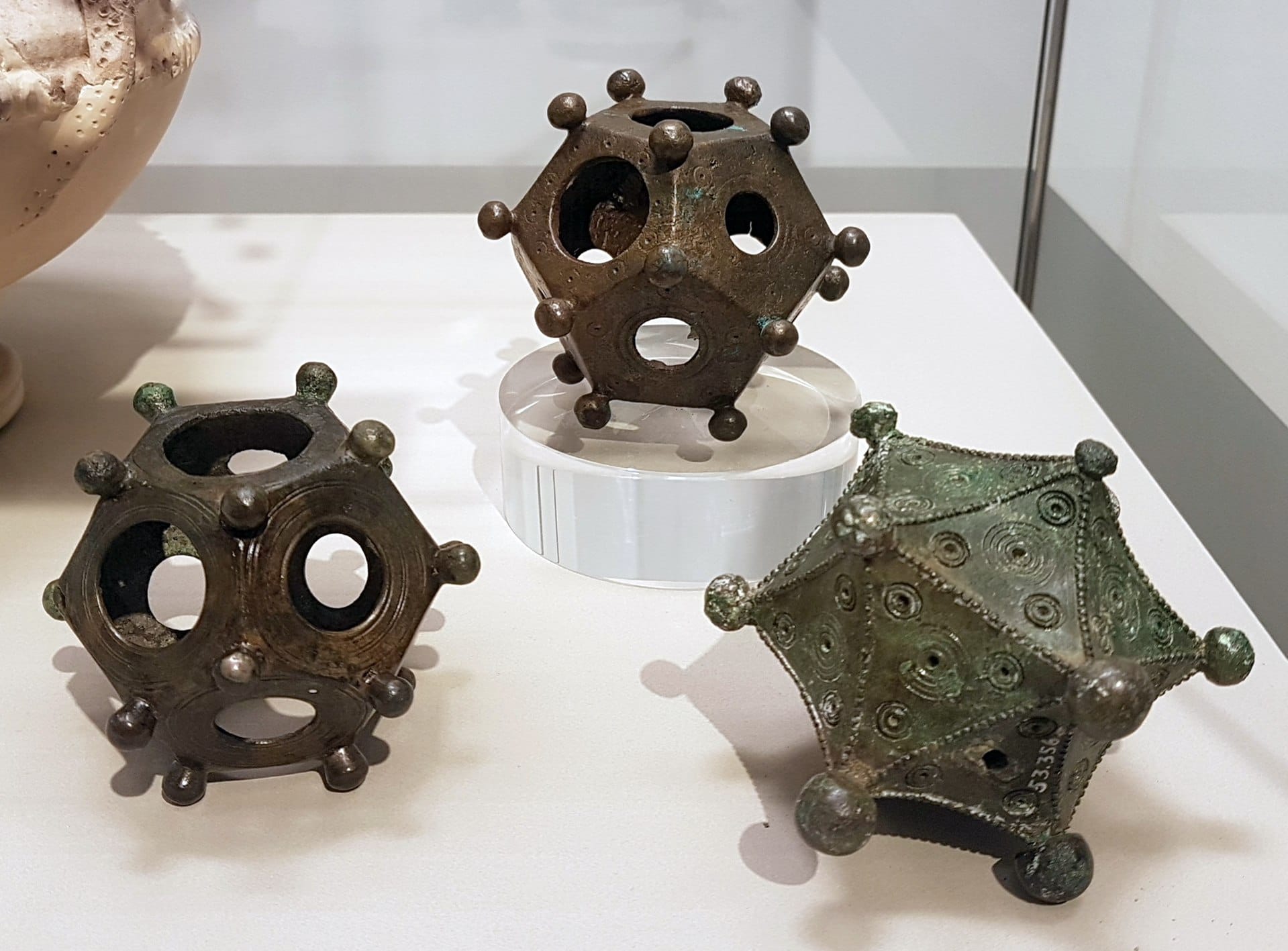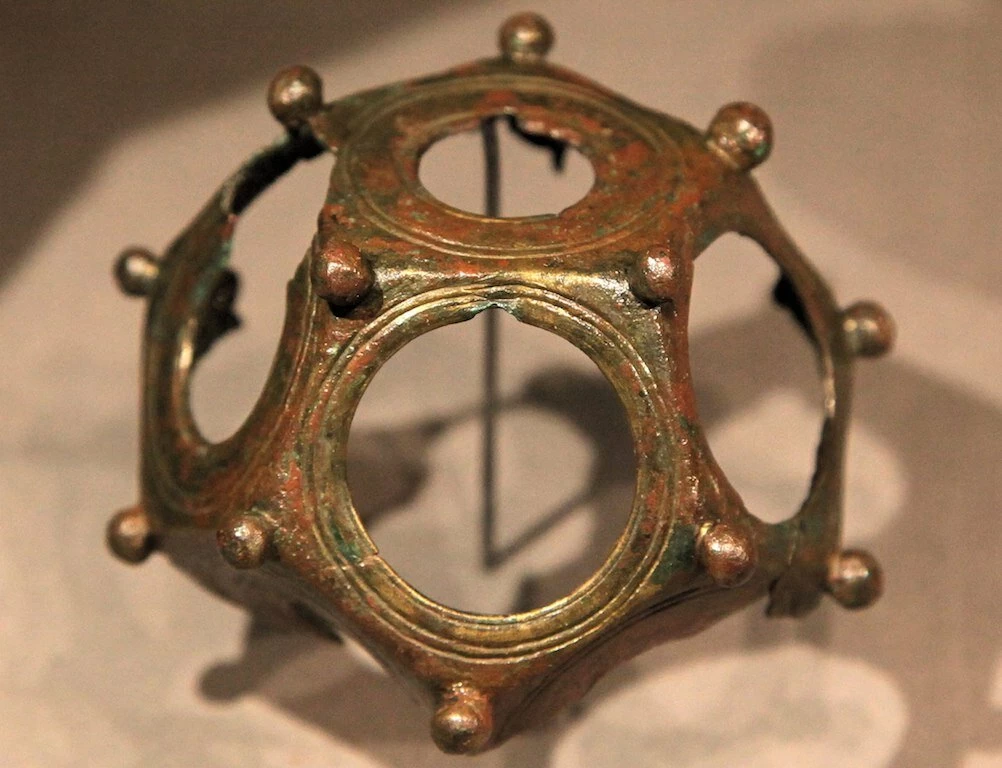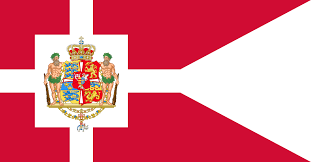
Archaeologists have discovered numerous artefacts and while it’s not been a walk in the park, to a great extent they’ve been able to discover their uses.
However, the Roman dodecahedron has proved to be even more difficult to decipher its use. These structures are knobby, hollow and metallic polyhedrons with 12 sides that have been discovered numerous times, especially around central Europe.
To date, there’s no specific explanation for its purpose or function. These objects vary in size, and the diameters of the holes are not identical in any single dodecahedron. All of them, however, have five globular knobs at the vertices of the pentagonal fronts.
What remains certain about the Roman dodecahedron is that it was valuable. The fact that they have been discovered to have been mentioned in any Roman text adds to the mystery already surrounding them.

A dodecahedron was first reported in 1739, and numerous people have put theories to debate the functions of these objects.
So many have argued about its role in astrology, and divination etc, some have gone as far as writing about it. G.M.C. Wagemans, in his article, The Hypothesis, used a series of estimates to show that several dodecahedra were able to calculate the best time for planting in certain locations in Northern Europe.
There’s also been proof that this instrument can be used for knitting. A student recently made a Roman dodecahedron 3-D print and made a glove with it. The student documented the process and uploaded it on a YouTube video.
This idea fits in with the geographical locations that the contraptions have been discovered in. Also, the fact that no two dodecahedrons are identical matches the idea.
The answer to the puzzle that is the Roman dodecahedron seems elusive and all we’ll probably have are guesses.





